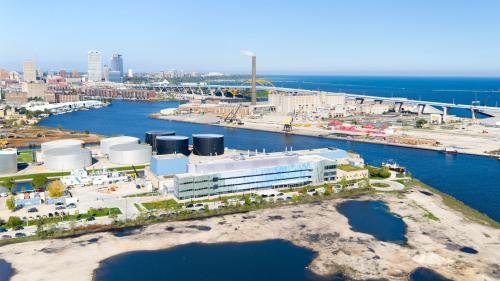There’s a profound shift under way in economic development, from overreliance on attracting jobs and talent from outside a region to greater emphasis on growing from within. Making that shift often involves formulating a new plan. But planning is just one piece of a much larger and more complex process of transforming economic development practices. And often the easiest piece at that.
With support from the Brookings Institution, I’ve been studying how regions have been moving from planning to implementation, and I’ve been struck by an interesting pattern. Almost as soon as the plan is completed, a natural process of entropy sets in that can often frustrate implementation. A number of factors are responsible, but three stand out in particular.
The first is that the transition from planning to implementation often requires new organizational structures. While planning is usually done by an ad hoc steering committee, implementation requires an established “backbone organization” willing to own the plan and able to mobilize the resources necessary to carry it out.
For the most part, that job has fallen to regional chambers and economic development organizations, since they are already in the business of economic development and often have resources available to support implementation efforts. However, within those organizations, new initiatives often end up competing for resources with established programs, and for the support of board members who remain wedded to more traditional approaches.
In addition, the practical work of carrying out the plan usually falls to work groups focused on particular pieces of the plan. Those work groups almost always involve new partners who were not part of the planning process, and who identify mainly with their particular piece of the plan, further diffusing ownership and understanding of the original plan.
As a result, as the focus moves from planning to implementation, and as the work expands, it becomes increasingly difficult to keep everyone on the same page and moving in the same direction.
A second factor is churning in leadership. Most regional economic development efforts rely heavily on volunteers, who tend to come and go, particularly during the transition from planning to implementation.
Some of that churning is planned to make room for new partners with the particular skills and resources needed to carry out the work. But much of it comes from volunteers or loaned staff feeling the tug of more pressing responsibilities and commitments elsewhere.
Churning is also a big problem within backbone organizations, particularly at the board level, and particularly among business members of the board. Since most board members roll off after their term is up, it is a constant challenge to recruit new board members and get them up to speed. After a couple cycles of leaders coming and going, it can be easy for backbone organizations to lose sight of the original plan, and for projects that require long-term investment to get lost among competing priorities.
A third factor is changing conditions. No single plan can hope to capture everything that’s relevant to regional growth, and all plans lose their relevance as conditions change. So, even the best-laid plans are incomplete from the outset and typically have only a half-life of a year or two. As a result, there needs to be some way to refine and update those plans.
Refining and updating the plan would logically fall to the backbone organization overseeing implementation. However, by the time it’s obvious that the plan is losing its relevance, most backbone organizations have become so immersed in their implementation efforts that they have neither the time nor capacity for another lengthy planning process. So, another ad hoc steering committee is often formed for that purpose.
If the next round of planning builds on the last, it can move things forward. But if it ignores what’s come before and what what’s already in place, it can actually be a hindrance to ongoing work.
Fortunately, there are innovative efforts under way within regions across the country to address these challenges. For example, to keep everyone on the same page and moving in the same direction, many regions are convening annual gatherings of key stakeholders to review progress, celebrate successes, and set priorities for the coming year.
To replenish the leaders and institutional memory lost from churning, some regions like Northeast Ohio are retooling their traditional civic leadership development programs to equip participants to support regional economic development efforts. Others are offering fellowships in backbone organizations for mid-level managers to gain hands-on implementation experience like World Business Chicago.
And to keep their plans relevant as conditions change, some regions like Greater Minneapolis-St. Paul are eschewing a formal written plan and continuously refining their plans as the work unfolds, allowing them to seize new opportunities that might arise.
These innovative efforts are making it possible to complete the process of transforming economic development practices.





Commentary
Over the planning hurdle, how regions implement economic development strategy
February 17, 2017